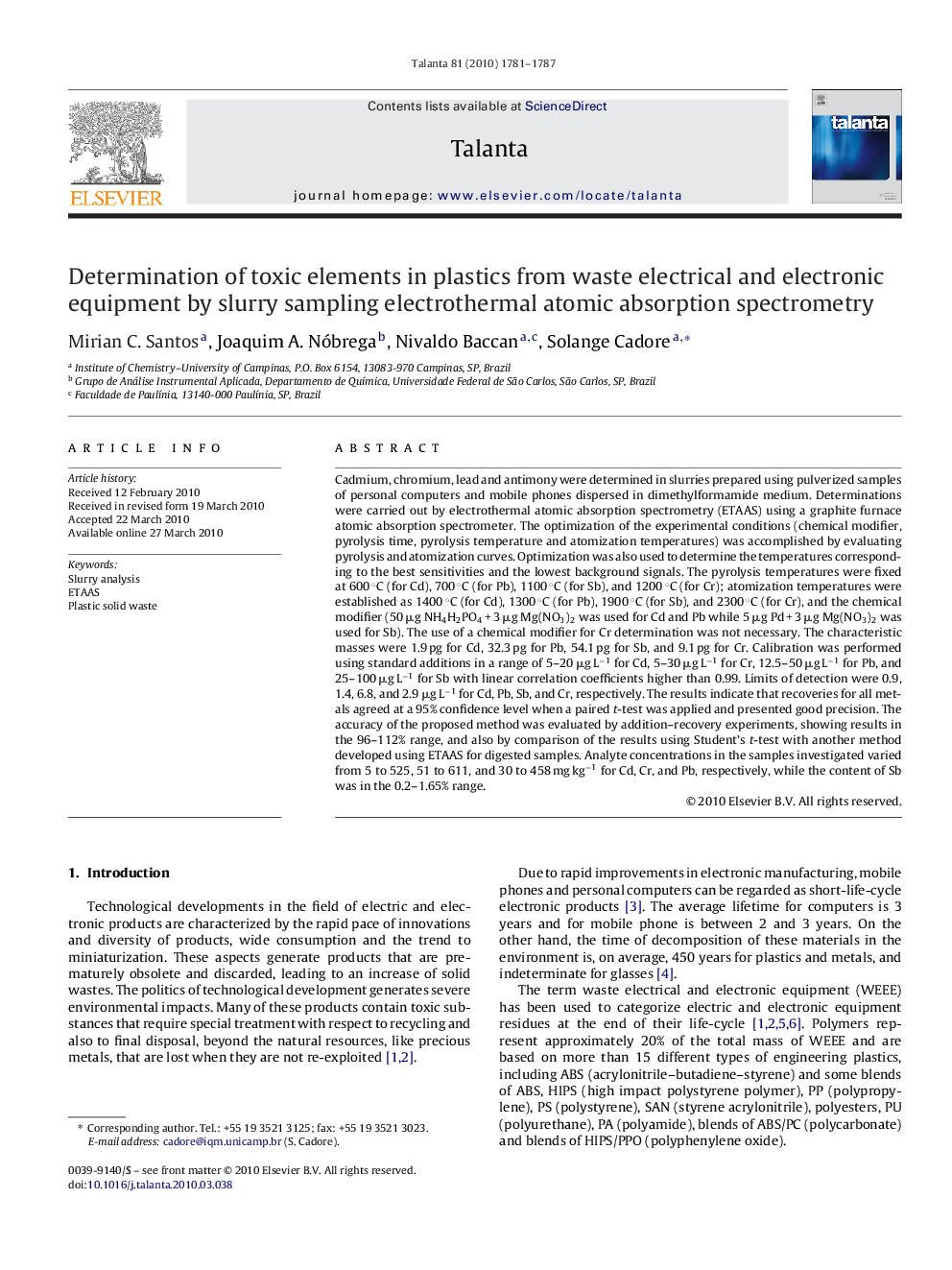| Article ID | Journal | Published Year | Pages | File Type |
|---|---|---|---|---|
| 1242704 | Talanta | 2010 | 7 Pages |
Cadmium, chromium, lead and antimony were determined in slurries prepared using pulverized samples of personal computers and mobile phones dispersed in dimethylformamide medium. Determinations were carried out by electrothermal atomic absorption spectrometry (ETAAS) using a graphite furnace atomic absorption spectrometer. The optimization of the experimental conditions (chemical modifier, pyrolysis time, pyrolysis temperature and atomization temperatures) was accomplished by evaluating pyrolysis and atomization curves. Optimization was also used to determine the temperatures corresponding to the best sensitivities and the lowest background signals. The pyrolysis temperatures were fixed at 600 °C (for Cd), 700 °C (for Pb), 1100 °C (for Sb), and 1200 °C (for Cr); atomization temperatures were established as 1400 °C (for Cd), 1300 °C (for Pb), 1900 °C (for Sb), and 2300 °C (for Cr), and the chemical modifier (50 μg NH4H2PO4 + 3 μg Mg(NO3)2 was used for Cd and Pb while 5 μg Pd + 3 μg Mg(NO3)2 was used for Sb). The use of a chemical modifier for Cr determination was not necessary. The characteristic masses were 1.9 pg for Cd, 32.3 pg for Pb, 54.1 pg for Sb, and 9.1 pg for Cr. Calibration was performed using standard additions in a range of 5–20 μg L−1 for Cd, 5–30 μg L−1 for Cr, 12.5–50 μg L−1 for Pb, and 25–100 μg L−1 for Sb with linear correlation coefficients higher than 0.99. Limits of detection were 0.9, 1.4, 6.8, and 2.9 μg L−1 for Cd, Pb, Sb, and Cr, respectively. The results indicate that recoveries for all metals agreed at a 95% confidence level when a paired t-test was applied and presented good precision. The accuracy of the proposed method was evaluated by addition–recovery experiments, showing results in the 96–112% range, and also by comparison of the results using Student's t-test with another method developed using ETAAS for digested samples. Analyte concentrations in the samples investigated varied from 5 to 525, 51 to 611, and 30 to 458 mg kg−1 for Cd, Cr, and Pb, respectively, while the content of Sb was in the 0.2–1.65% range.
